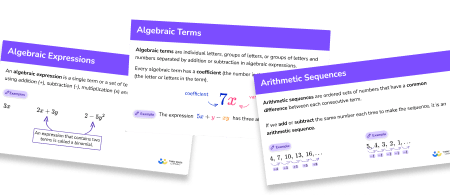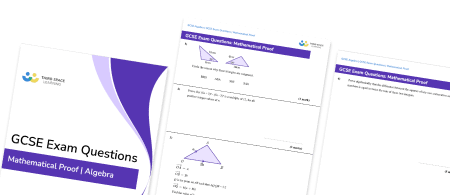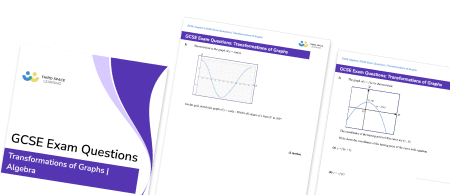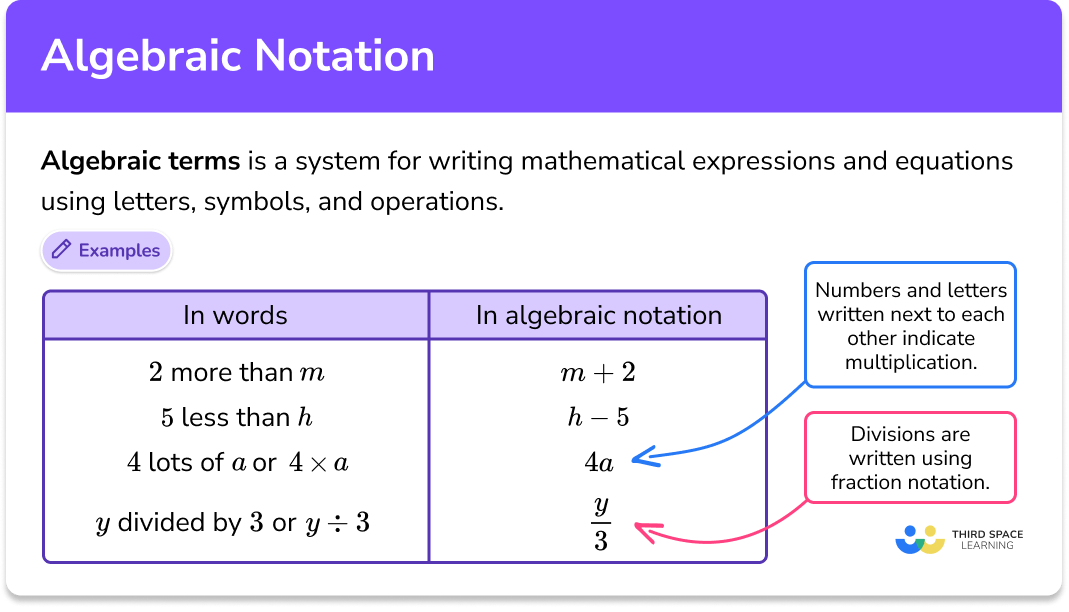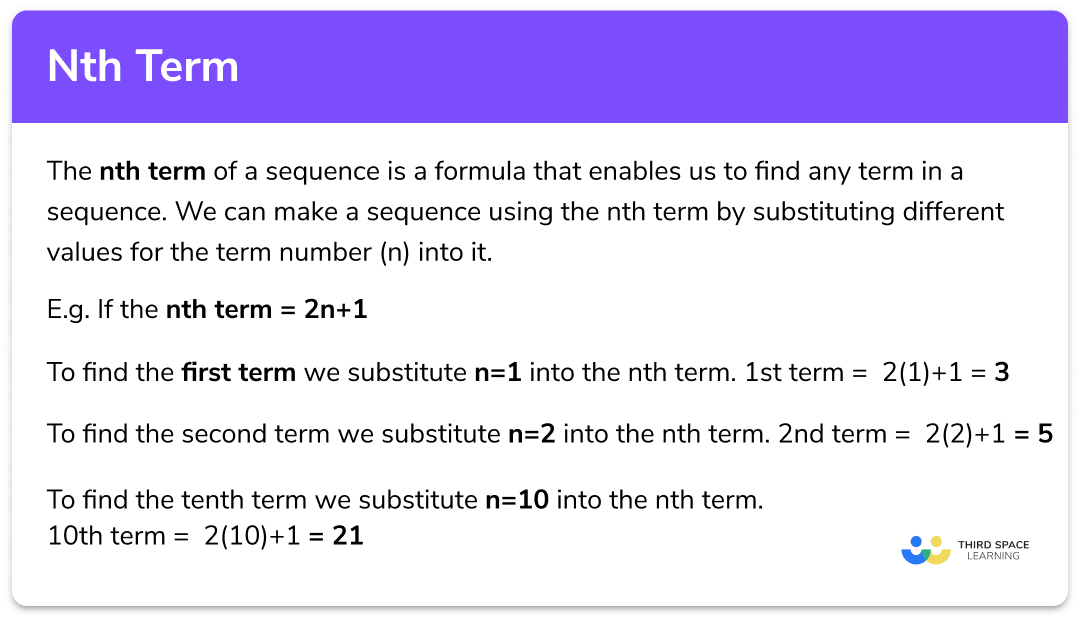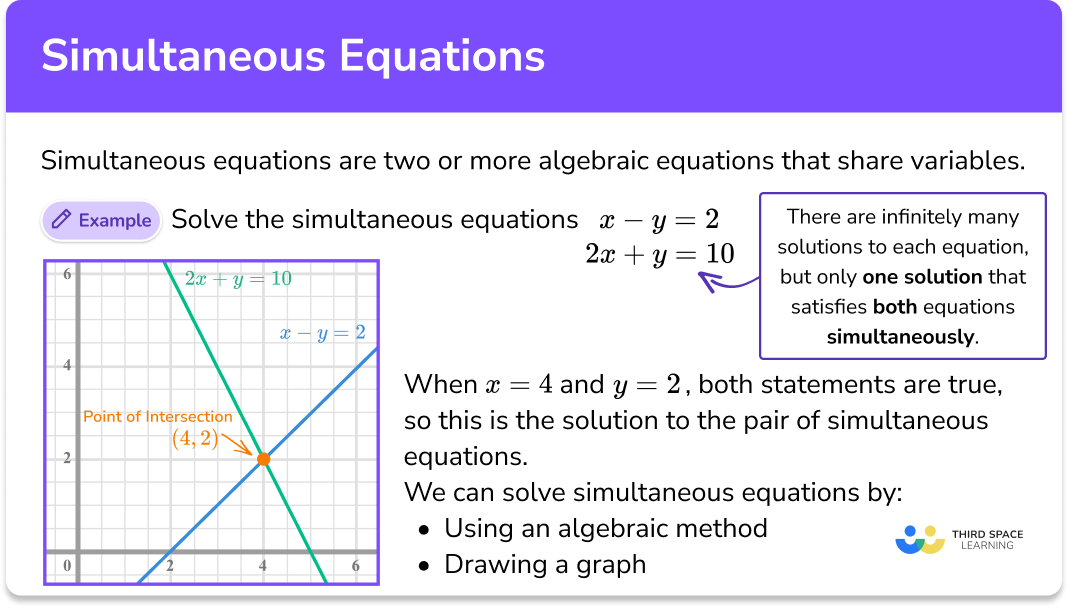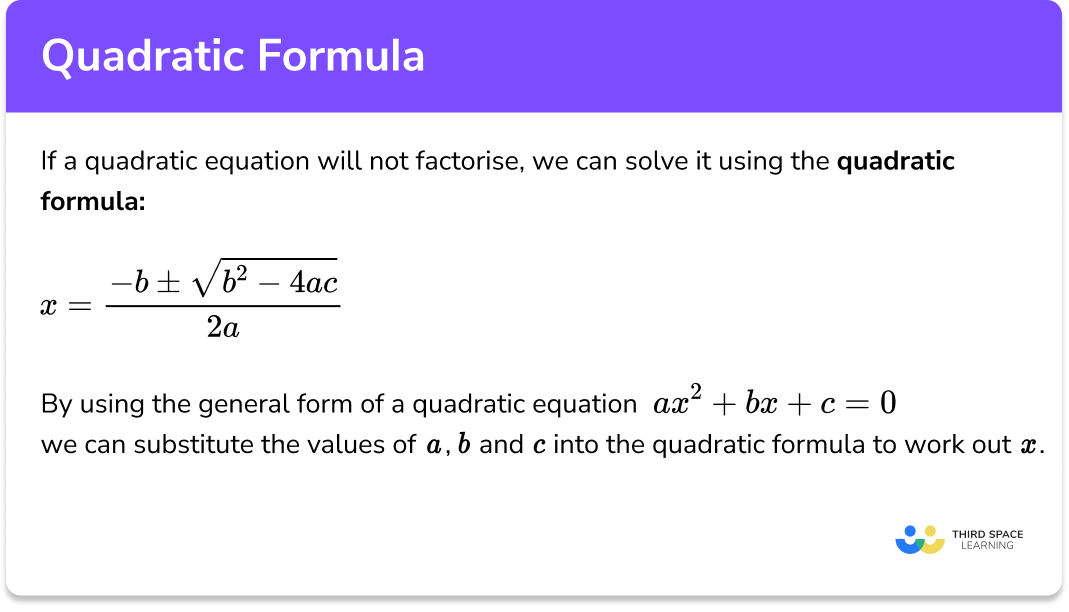FREE DOWNLOAD
Nth Term Worksheet

Help your students prepare for their Maths GCSE with this free nth term worksheet of 35 questions and answers
- Section 1 of the nth term worksheet contains 27 skills-based nth term questions, in 3 groups to support differentiation
- Section 2 contains 3 applied nth term questions with a mix of worded problems and deeper problem solving questions
- Section 3 contains 5 foundation and higher level GCSE exam practice questions
- Answers and a mark scheme for all questions are provided
- Questions follow variation theory with plenty of opportunities for students to work independently at their own level
- All questions created by fully qualified expert secondary maths teachers
- Suitable for GCSE maths revision for AQA, OCR and Edexcel exam boards
Nth Term at a glance
The nth term is a general rule for a number sequence. It is sometimes called the position-to-term rule.
The nth term of the sequence can be found for linear sequences by working out the common difference by subtracting a given term from the next term in the sequence, e.g. the 5th term subtracting the 4th term will give the common difference.
This common difference then gives the coefficient of n in the nth term formula. The remainder of the nth term can be found by considering how the sequence produced by the common difference multiplied by the term number n differs from the original sequence. For example, if the common difference was 4, we could use the term 4n to create a sequence which could then be compared with the original sequence and then adjusted accordingly.
The common difference can also be used to find missing terms of a sequence. For example, we could find the 1st term in the sequence by substituting n=1 into the sequence, the 10th term by substituting n=10, the 20th term by substituting n=20, the 50th term by substituting n=50 and the 100th term by substituting n=100 etc.
The nth term of a linear sequence can also be used to check if a number is in the sequence by setting the number equal to the nth term and solving the equation. If the solution is an integer, then the number is in the sequence. If the solution number is a decimal, then the number is not in the sequence.
We can find the nth term for different types of sequences such as quadratic sequences which involve square numbers.
Looking forward, students can progress with other sequences worksheets and on to additional algebra worksheets, for example a simplifying expressions worksheet or simultaneous equations worksheet.

For more teaching and learning support on Algebra our GCSE maths lessons provide step by step support for all GCSE maths concepts.
Do you have students who need additional support?

With Third Space Learning's secondary maths tutoring programmes, students in Year 7-11 receive regular one to one maths tutoring to address gaps, build confidence and boost progress.
"My confidence in the tutoring is high. We've had some phenomenal results. I even had one girl get a Grade 8 this year; she came to every tutoring session."
Stacey Atkins, Maths Director, Outwood Grange Academies Trust

